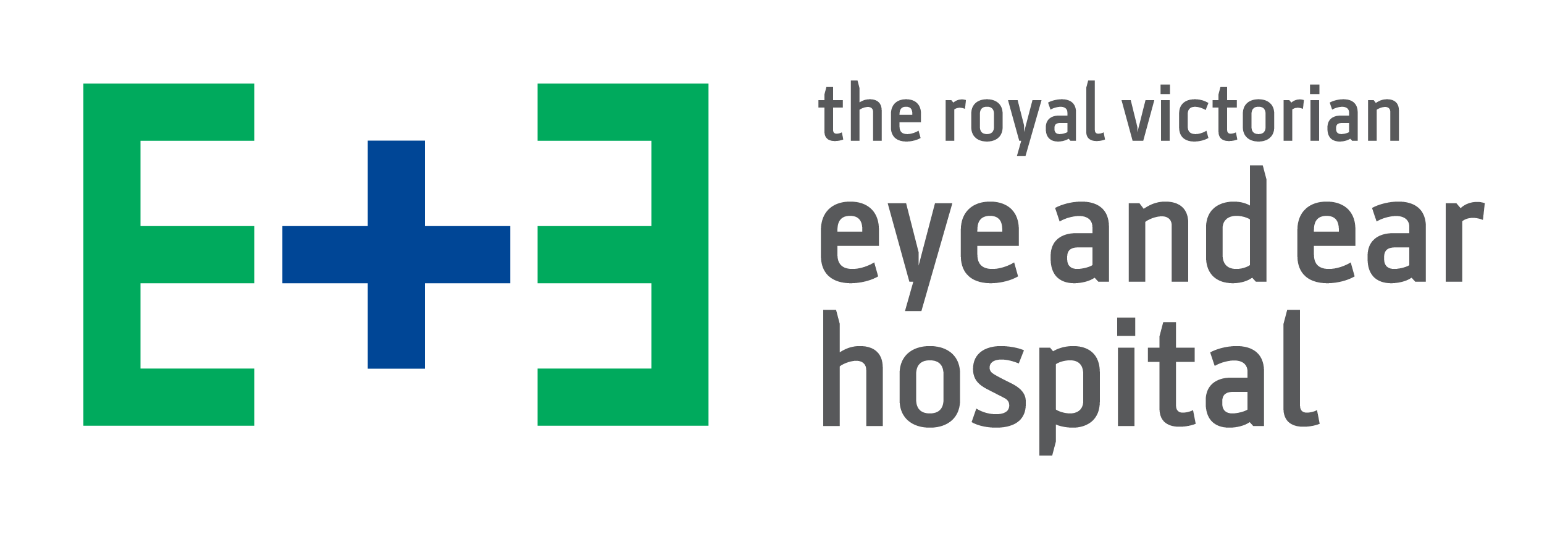What is the Eustachian tube?
The Eustachian tube is an airway passage which connects the middle ear to the back of the nose/throat. It is about 35mm long in adults and is orientated diagonally. In children, the Eustachian tube is shorter and more horizontal than in adults. The opening and closing of the Eustachian tube is controlled by a number of small muscles at the back of the throat.
Parts of the ear: Outer ear = Pinna, Temporal bone, Ear Canal; Middle ear = Ear drum; Inner ear = Ossicles (middle ear bones), Vestibular system (balance organs), Cochlea (hearing organ), Eustachian Tube.
What does it do?
The main role of the Eustachian tube is to balance the air pressure in the middle ear with the air pressure in the outside environment. It is also important for aeration of the middle ear, and drainage of secretions from the middle ear. Normally, the Eustachian tube is closed, preventing contamination of the middle ear from nasal secretions. It opens when we yawn, chew or swallow.
Eustachian tube dysfunction (ETD)
Sometimes, the Eustachian tube does not open properly or may become blocked and this is known as Eustachian tube dysfunction (ETD). This can result in insufficient air behind the ear drum which affects the middle ear pressure and can cause the ear drum to become retracted into the middle ear. This can cause a feeling of fullness in the ear and muffled hearing. Eustachian tube dysfunction is usually temporary and many people experience some degree of Eustachian tube dysfunction at some point in their life.
Symptoms of ETD
Symptoms associated with Eustachian tube dysfunction include:
- a feeling of fullness or ‘blocked’ ears
- crackling or clicking sounds when chewing or swallowing
- intermittent pain (otalgia)
- muffled or dull hearing
- discomfort.
Causes of ETD
Eustachian tube dysfunction is often caused by differences in air pressure arising from:
- the common cold; chest, ear or sinus infections
- altitude changes (air travel, driving through hilly environments, scuba diving)
- nasal congestion, sinus problems or allergies
- smoking
Who is more susceptible to ETD?
Children are more prone to Eustachian tube dysfunction for a number of reasons. When compared to adults, a child’s Eustachian tube is more horizontal and this does not always allow adequate drainage of fluid. The muscles surrounding the Eustachian tube are not as well developed in children, which can also cause problems. Eustachian tube problems in children can lead to a build-up of fluid behind the eardrum, known as Otitis Media with Effusion or ‘glue ear’.
People who are exposed to frequent flying or deep sea diving may experience greater problems with the Eustachian tube, as they are exposed to environments that have sudden changes in atmospheric pressure. In rare cases, damage to the tissue linings can occur after rapidly ascending or descending and cause perforations of the eardrum and hearing loss. This is known as barotrauma.
Treatment for ETD
- If the Eustachian tube dysfunction is mild, often no treatment is required and the symptoms usually resolve within a few weeks.
- Treating the underlying infection, or waiting for your cold to clear, may allow the Eustachian tube to start working again. It may take some additional time for ETD symptoms to resolve even if you have already recovered from your cold or infection.
- Eustachian tube dysfunction whilst flying can often be relieved by chewing gum, yawning, drinking, swallowing or completing the Valsalva manoeuvre. Special earplugs called Earplanes are also available and that can help to regulate pressure changes in the ear when flying.
- Nasal decongestants can assist with clearing the Eustachian tube and nasal passages, particularly in patients with sinus problems. Antihistamines are also sometimes recommended if Eustachian tube dysfunction is due to allergens.
- If the Eustachian tube dysfunction leads to Otitis Media with Effusion, and does not resolve on its own, you may need to see an Ear, Nose and Throat specialist.
For current information on Eustachian Tube Dysfunction, please view the fact sheet here.
